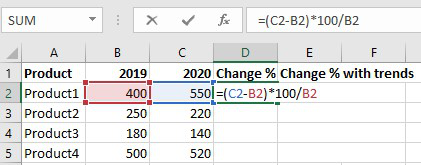

- Using up and down arrows to indicate growth how to#
- Using up and down arrows to indicate growth update#
- Using up and down arrows to indicate growth code#
If you have a grid-shaped summary table or a crosstab, your statistics will be placed on top of one another within each cell.
Using up and down arrows to indicate growth update#
All of these will update when the person viewing my dashboard filters the data. Laying out a pair of these, along with some numbers generated dynamically from the data, allows me to place my results on the page, together with arrows. Checks whether the z-Score is positive or negative, and chooses an up or down arrow respectively.The pre-defined value is 0.05 to correspond with Displayr's default setting. Checks the p-Value against a pre-defined threshhold to determine if an arrow should be shown.

For more on this, see our previous post Adding Icons to Dashboards Using "Font Awesome.
Using up and down arrows to indicate growth code#
Modify the third line of the code to correspond to the row label of the result you want to use.In this example, the Name of my table is table.NPS. You can find the name of the table by clicking the table and looking in Properties > GENERAL > Name in the Object Inspector on the right hand side of the screen. Modify the second line of code so that input.table refers to the name of the table.To add the arrow for Apple's NPS to your page: We will create an arrow to tell us if the NPS score for Apple is significantly high or low according to the table. In this example, we have a battery of NPS scores for different tech brands. If you have a single-column summary table, the statsitics will be placed side-by-side, and it will look like this: Taking arrows from a table with a single columm The layout of the table affects the way you refer to the table in R code. The next step you should take depends on whether your table has the statistics shown side-by-side, or if it has the statistics stacked on top of each other within each cell. The Corrected p is used to determine if a cell should be highlighted, and the z-Statistic determines if the arrow should point up or down. Drag the table off of your page so that it does not obscure the objects on the rest of the page.This prevents the table from being shown on the published dashboard. Go to the Appearance section in the ribbon at the top of the screen, and select Hide.With the table selected, go to the STATISTICS > Cells section of the Object Inspector and add the Corrected p and z-Statistic.(Optional) Modify the table using the options in Data Manipulation > Rows/Columns as needed.(Optional) Drag a second variable set from Data Sets into the Columns box of your new table.Drag a Variable set from Data Sets on to the page.The first step in showing arrows from a table is to set up a table which displays all of the relevant statistics. Fortunately, all of the information that is needed to display the arrows and font colors on the table is available for you to access in code. The tables in Displayr have the added benefit of behind-the-scenes algorithms that work out which results are most interesting. In particular, I use tables to supply results to the options from Insert > Visualization, and I use R code to pluck out and format the results that I want to highlight (for an example, see this post). Now, I don't mean to disparage the tables, but I usually hide them out of the way and let them work in the background to feed into the more attractive elements of my dashboards.

They automatically compute statistics from your raw data. Tables are often the work-horse when designing dashboards in Displayr. We also look briefly at how you can use other tests that are available in R. Most importantly, such arrows can update themselves when the dashboard page is filtered.
Using up and down arrows to indicate growth how to#
In this article, I show you how to get the arrows out out the tables and put them onto your page so that you can display them side-by-side with your key results. Adding similar arrows (and other symbols) to a page is a great way to make your dashboards more impactful. These arrows are also available on many of the charts. The tables in Displayr include arrows and font colors to highlight interesting results.


 0 kommentar(er)
0 kommentar(er)
